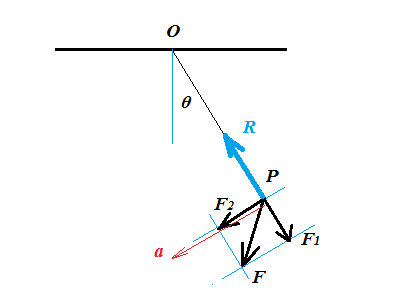I would like to know if the following statement is true or false even if I expect that it is true.
Notation: I will consider a string that has no mass and that can not be extended. Saying that a force has downward trajectory I will mean a force such that goes toward the floor, so this force is not necessarily vertical.
Statement: Consider a vertical string with an extremity fixed on the ceiling. If we attach on the other extremity a point (with or without mass it's the same) and there is a force $\vec F$ acting on this point with downward trajectory, then only the component of $\vec F$ that is parallel to the string "causes" the constraint force $\vec R$ of the string. Furthermore, this $\vec R$ has the same intensity of the parallel component of $\vec F$ that we have just mentioned, but opposite direction.
Moreover, if it is true, can we say that it is an experimental law ?


